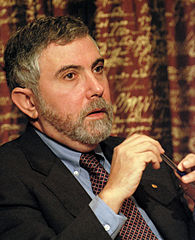A naive thinker about open borders might think of it as simply a continuum of possibilities: we can open the borders a bit, or a lot. This distinction is discussed on our moderate versus radical open borders page.
The idea of keyhole solutions has added more dimensions (in a very literal mathematical sense, in addition to the more metaphorical one) to the discussion. Rather than thinking simply of “how much more open should borders be?” the question shifts to “what sort of policy combinations can allow for us to get the most benefit out of migration, in the ways we care about?” The term “keyhole solutions” has come to represent the general idea of exploring a larger space of possibilities with respect to how migration can be expanded.
The purist in me isn’t too happy about this, because “keyhole solutions” as I believe the term originated had a more narrow meaning: to refer to narrow, targeted solutions that address the particular (real, perceived, or predicted) problem at the intersection of migration and whatever other domain is being considered, while trying to interfere as little as possible with the rest of the universe. But meaning is imbued by usage, and I’m okay with the meaning expanding and getting more fuzzy. In this post, however, I discuss some important distinctions between different approaches to “compromise” on open borders policy. There are a few additional subtleties that I’ll deliberately refrain from here, thereby meaning that my post is not reflective on my full thinking on the topic. I’m making that trade-off to keep the post simple.
A simple illustration of the distinction between true keyhole solutions, complementary policies, and (selective) blanket restriction
Consider the (abstract) problem that high levels of migration, along with current de facto rules for the rules for eligibility for welfare benefits, could lead to fiscal bankruptcy. Consider three potential “solutions” (note that these don’t even come close to exhausting the space of possible “solutions” — but they help to illustrate the distinction I’m trying to draw here):
- Improve the effectiveness with which immigrants (perhaps limited to the additional immigrants under migration liberalization) are walled off from the welfare state (this could involve changing the rules, or enforcing existing rules more effectively, or a combination).
- Reduce welfare benefits across the board for the whole population (see also our contraction of welfare state page).
- Forbid the migration of people for whom the probability of welfare benefit use, or the extent of such use (in expectation) exceeds a threshold.
In a loose sense, these are all “keyhole solutions” insofar as they attempt to address the (perceived or predicted) problem of migrant welfare benefit use.
However, they are all different in important ways:
- The first addresses the perceived problem at the intersection of migration status and welfare eligibility. Prima facie, this targets the problem most narrowly and is most deserving of the “keyhole solution” label. I’ll call this type of solution a true keyhole solution.
- The second addresses the problem but focuses on the broader issue of welfare use and welfare eligibility. Rather than focusing on migrants per se, it addresses a potential problem that is made more severe due to migration flow, but it addresses it in a way that does not per se discriminate on the basis of migration status. I’ll call this type of solution a complementary policy change.
- The third seeks to preserve the status quo as far as possible with respect to domestic policy, and addresses the potentially dangerous interaction with migration by forbidding the forms of migration perceived as risky. I’ll call this type of solution a blanket restriction. To emphasize that the blanket restrictions don’t apply to everybody, we might call it selective blanket restriction.
However, from another perspective, (2) and (3) are examples of keyhole solutions, insofar as they directly address problems created by migration. Whatever names you choose, I want to claim that there is an important conceptual distinction. Continue reading Not-quite-open borders: keyhole solutions, complementary policies, and blanket restrictions


